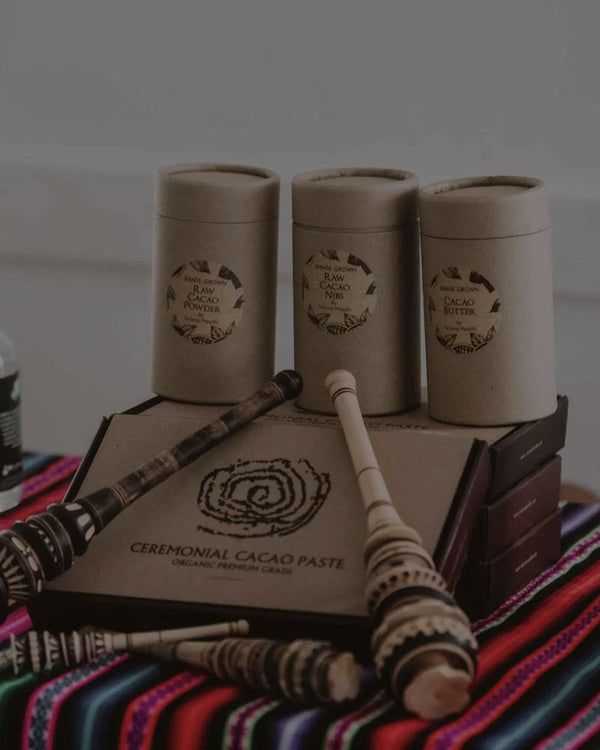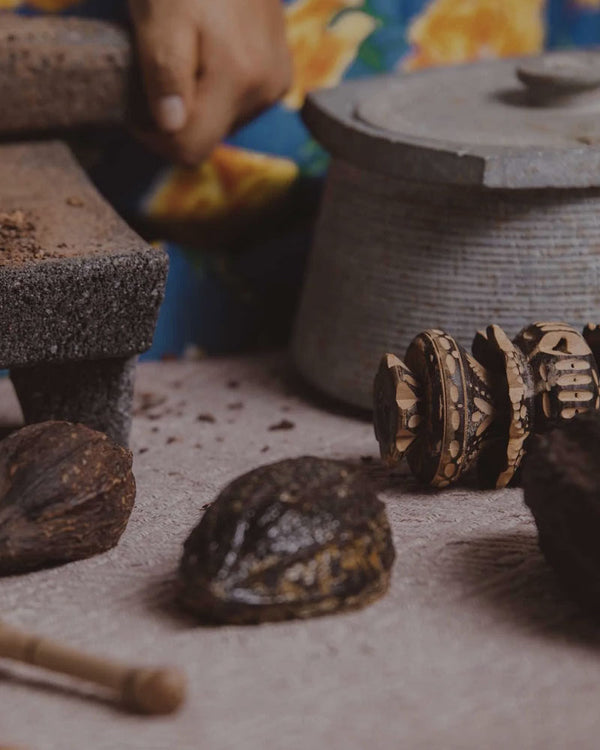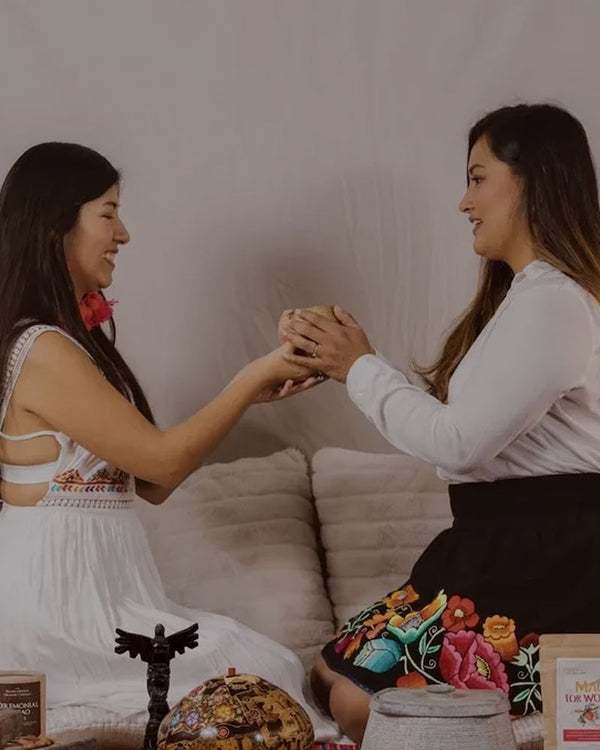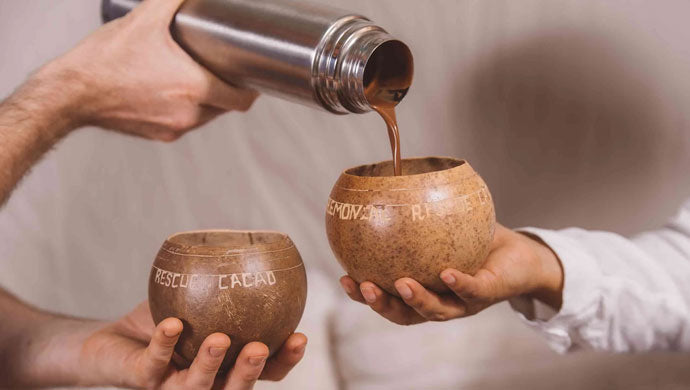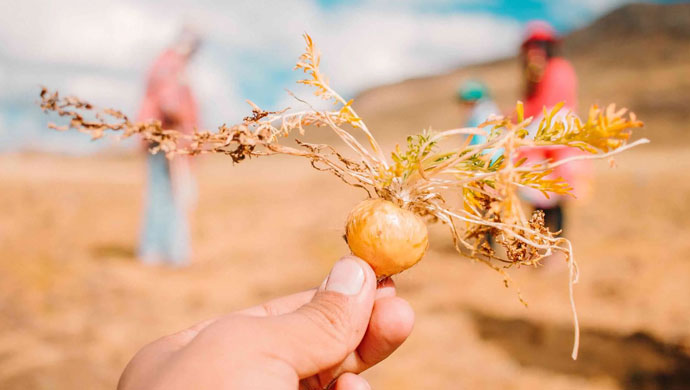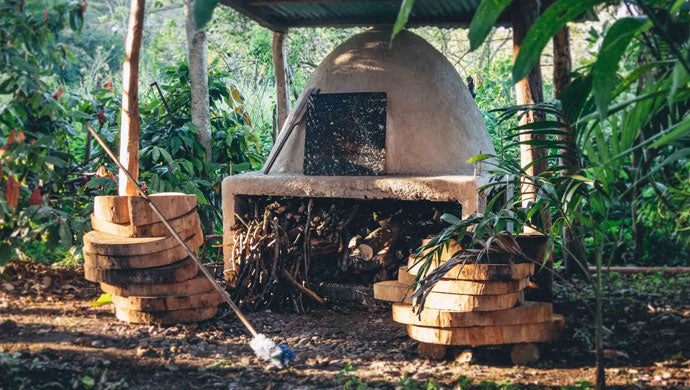Theobroma Cacao
is a plant with a rich history that began in the historical region of Mesoamerica, or Central America as we know it today. Mesoamerica was home to many ancient civilisations, such as the Mokaya, the Olmecs, the Mayans, and the Aztecs, who were all believed to consume cacao1–8. The details concerned with where wild cacao first grew in Mesoamerica and when it was first domesticated for human use is still debated today.
Recent archaeological evidence has suggested that cacao was being consumed as part of traditional ceremonies by ancient Peruvian civilisations as early as 5,500 years ago9. The cacao-fermented drink was found as part of the archaeological investigation of the Montegrande ceremonial temple in Jaén, Peru9. Genetic evidence suggests that wild cacao trees originated in the foothills of the Andes in Peru, more than 5,000 years ago10. Cacao residue found on ceramic and stone artefacts on the border of Ecuador and Peru from around the same time to support this8. The first domestication of cacao likely occurred in this area of South America by the native people before being carried on foot to Central America8,11.
The Mokaya people are one of the earliest civilisations in Mesoamerica1,6 and are possibly one of the first groups of people to have begun consistent cultivation and consumption of cacao. Archaeological and genetic evidence indicates that cacao was being consumed as early as 1,900 B.C. by the Mokaya people followed by the Olmec people1–3,6. Ceramic vessels found at the archaeological sites of Paso de la Amada and El Manatí in Mexico were dated between 1,900-1,500 B.C. and found to contain cacao residue1,2,6.
A ceramic shard from Pasode la Amada, dating back to 1,900-1,500 B.C. with traces of cacao on itsinterior. Photograph by Terry G. Powis1.
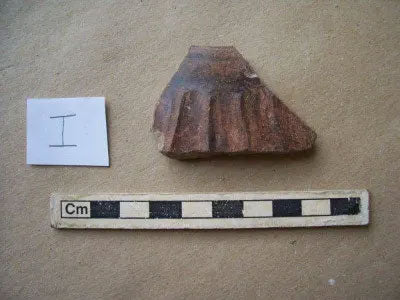
The Mayans were possibly the first to write about cacao in the form of hieroglyphs and pictures, found in their tombs and on the vessels to contain their liquid cacao. One such vessel, dating back to 460-480 A.D., from a Mayan tomb in Río Azul, northeastern Guatemala, possesses the characters that translate to the Olmec and Mayan word, “ka ka wa,” or cacao2,3,12. This word is a combination of the words meaning “man” and “woman,” referring to how cacao ceremonies represented the unification of man and woman to create life. Ceremonies also depicted this in the use of molinillo, a specialised whisk that could introduce air into the cacao paste. The molinillo(click to buy) represented masculine energy, while the cacao vessel represented the feminine and the process of whisking the cacao to create air represented the creation of life.
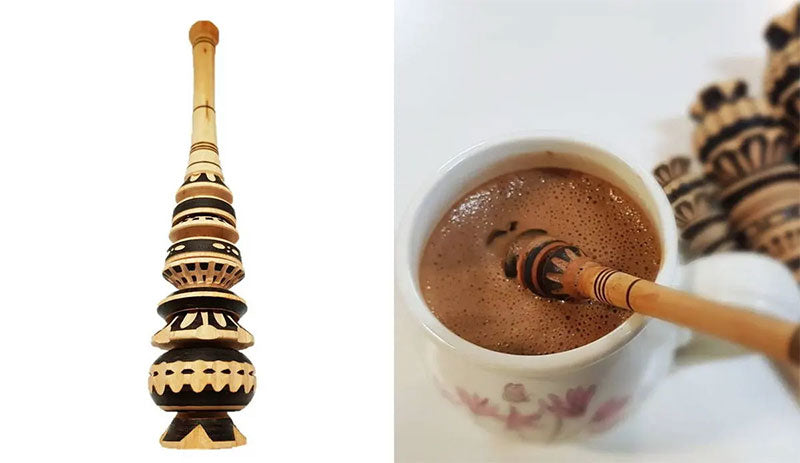
Other traditional ceremonial vessels were used to hold cacao, such as a Mayan vessel found at a site in northern Belize, Central America and was dated between 600 B.C. and 250 A.D. This vessel possesses a spout, which experts believe was also used to froth them by introducing air through the spout4. Similarly, the word “chocolate” is derived from the Aztec’s Nahuatl word, xocalatl, meaning “warm liquid,” derived from Mayan and Olmec languages13,14.
Molinillo whisk used to froth raw cacao.
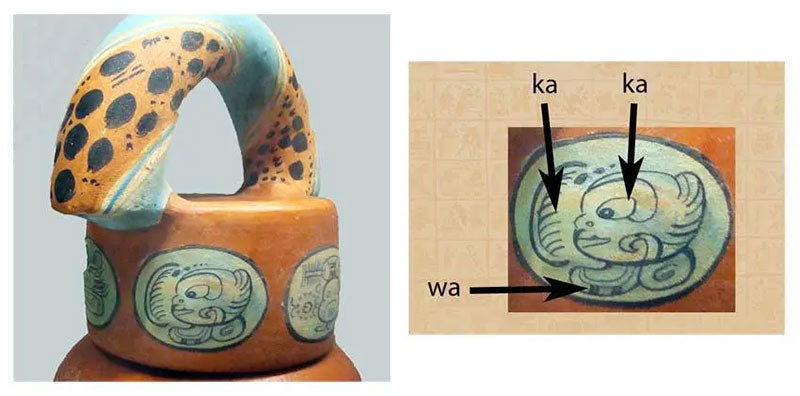
The Aztec people discovered the Mayan use of cacao upon their arrival in Mexico and they, too, began to make their own cacao preparations2,3. As they could not grow cacao themselves, the Aztecs took cacao beans as tribute in the cacao-growing areas they conquered2. For Mesoamerican civilisations, liquid cacao was reserved only for the elites, nobles, and special occasions. Vast quantities of the beans were said to have been stored away in warehouses for the Aztec nobility2,3,6, and depictions and documents from the time of the Mayans and Aztecs indicate the use of cacao beans in marriage ceremonies, tributes to kings, as currency for trade, and even in ceremonies to gods, such as Ek Chuaj, the Mayan merchant deity and patron of cacao2,13. Domesticated cacao trees were grown in plantation-like settings in many regions across Mesoamerica, such as Guerrero, Colima, Tabasco, and the Gulf of Honduras3, but the most sought after by the Aztec people was the Criollo cacao beans from the province of Shoconochco, known as Soconusco in Colonial times2.
A spouted vessel from Colha in northern Belize, Central America dating between 600 B.C. and 250 A.D. and found to contain cacao residue from use by early Mayans4.
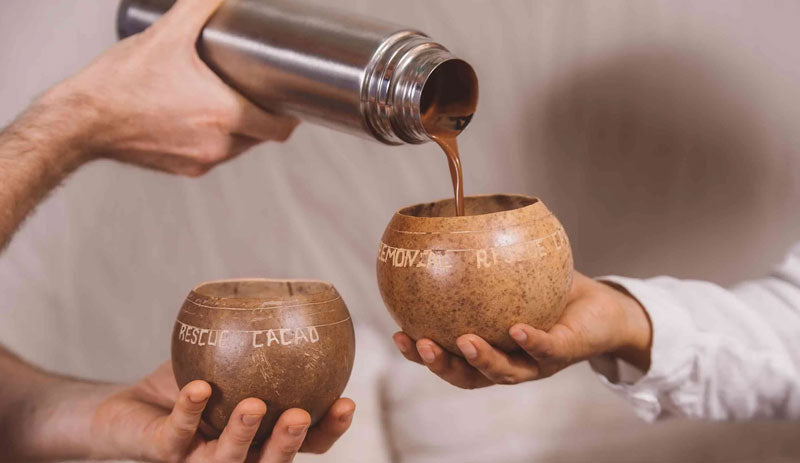
The spread of cacao across Mesoamerica and eventual increased availability lead to more commonplace use, evident in the cacao residue found in vessels that were not necessarily for sacred or noble use3,6. Cacao was typically prepared as a beverage by being ground into a paste for ceremonial consumption2. However, by the arrival of the Spanish, recipes for the use of cacao in other ways were plentiful in Mesoamerican cultures. Cacao was mixed with hot or cold water, with spices, ground seeds, honey, and vanilla, incorporated into soups, or made into a sauce to be poured over other dishes, similar to mole sauces used today3,4.
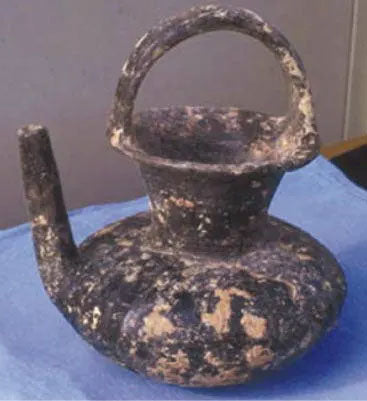
The journey of cacao from the Americas to Europe is one that is not clear, and several theories and stories have arisen based on the little evidence available. Christopher Columbus is thought to have encountered a cargo of cacao beans during his fourth voyage in 1502, where he reached the Gulf of Mexico,2,3 but nothing became of this as he did not know what cacao was2. Others believe that it was part of a haul from Tenochtitlan by the Spanish conquistador, Hernán Cortés. It is said that he noted the local use of cacao as food and drink, as well as its value as currency and that he captured stores of cacao and monopolized its major areas of growth in Soconusco and Izalcos, which is now El Salvador3. This has also been disputed as his exports back to Spain were well documented and none of them included cacao beans2.
A definite mention of cacao in Europe exists in a Dominican document detailing the gifting of cacao to Philip II of Spain in 1544. Philip II and the Spanish Court received a package of cacao beans and a cacao drink from a group of Kekchi Mayan people with several Dominican priests and they were believed to have taken a liking to the beverage2. Sugar was also being spread throughout the Americas by the Portuguese around the same time, whose addition to cacao drinks made them more popular with the Europeans3. By the end of the 16th century, the export of cacao to Spain from Central America was more common and demand for cacao was beginning in the rest of Europe2,3. Cacao reached Italy2,3 then France, through a marriage between Ana of Austria and Louis XIII,3 and by the end of the 17th century, cacao-based products had reached all throughout Europe, the Pacific and the Philippines2,3.
For most of the 18th century, cacao-based foods and drinks were primarily consumed by upper-class groups as their prices remained high. Processing of cacao was slow and laborious, and the beans had to be exported from the tropical regions where they were limited to growing3. The development of new methods for processing cacao beans into powders and butters that were easier to cook with paved the way for new cacao products and lower prices.
The Dutch chemist Coenrad Johannes Van Houten first added alkaline salts to his cacao products in 1815 to help reduce their bitterness. By 1828, he had developed and patented a dry-press machine which removed much of the butter content from raw cacao, resulting in what is known as “Dutch process cocoa.”3 This cocoa powder could be more easily mixed with sugar and other ingredients to make drinks and other foods3. It was the first major step towards the development of the chocolate products of today.
In 1847, Joseph S. Fry and his sons developed the first commercial chocolate bars in a process that added back the removed cacao butter to the pressed cocoa powder3. Their British rival, Cadbury, quickly dominated the market by selling specialty boxed chocolates for gifting to others, particularly for Valentine's Day, Christmas Day, and Easter in the late 1800s3,16. Other major competitors, some of which are still around today, entered the market throughout the century with their own innovations and unique recipes. The Swiss chocolatier Daniel Peter combined the raw "liquor" of cacao with Henri Nestle's powdered milk to create milk chocolate3. In 1879, Rodolphe Lindt introduced a "conching" process to his chocolate manufacturing3,17. This process mixed the chocolate in a unique way, resulting in a smoother chocolate product3. Milton Hershey focused on producing chocolate and chocolate-coated sweets in the U.S., dominating much of the market3. Mass production of his products was achieved by the Hershey Company's large dairy farms and sugarcane farms in Cuba, setting a new precedent for modern manufacturing3.
During this time, the supply of cacao beans to Europe from Venezuela began to decline as a result of the wars for independence. The Guayaquil plantations in Ecuador met the demands for cacao in Europe, largely due to the availability of inexpensive labour3. Between 1840 and 1870, production slowed from civil war and the spread of yellow fever, but recovered by 1900, producing 20,000 tonnes per year3. However, cacao plantations were being established in as many tropical regions as possible, including Africa and South East Asia. The islands of São Tome and Principe, off the west coast of Africa, became the largest exporters of cacao by 1905, overtaking Latin American producers3. Africa eventually became the leaders of cacao export, surpassing Latin America by the 1920s, as the output of cacao around the world had grown by nearly 800% between 1900 and 19393.
Today, millions of tonnes of cacao beans are produced worldwide in over 50 countries3,14,18 with the cacao beans being worth over US $4 billion a year. These beans are produced to meet large demands for a huge variety of products, including cacao butters, powders, nibs, typically for confectionary3,14. Most of these products are to make confectionary, however, other goods can also be produced, such as timber and firewood, medicines, and even products for use in traditional ceremonies14. While cacao is best known in the Western world as a source for confectionary, raw cacao used correctly is still a sacred medicine that possesses vast physical and spiritual benefits.
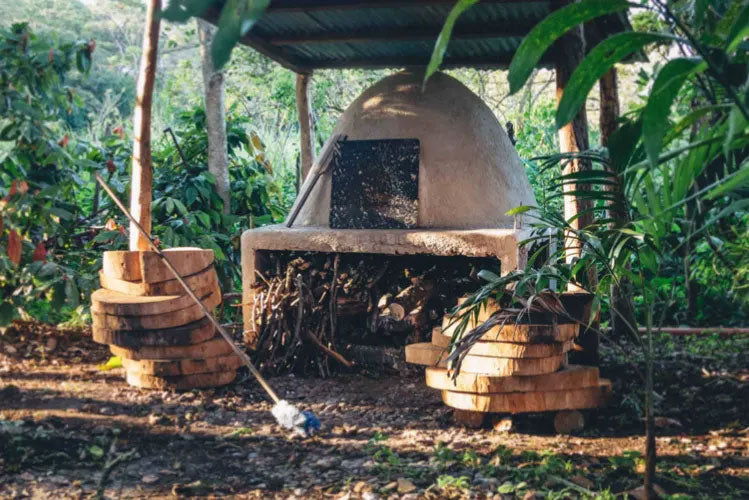
Why Rescue Cacao?
Our Ceremonial Cacao Paste is a healing and heart opening elixir produced and blessed respecting mother nature and her frequency. It is 100% pure organic, single-origin and grows under the natural canopy of the Amazon jungle, surrounded by other plants like banana or papaya trees. Our paste is made only from virgin crop, hand-selected pods, without any imperfections. The pods are opened and then inspected with only pristine white coated fruit covered beans taken through to fermentation. After fermentation the beans are dried then milled into a creamy, rich paste following ancient traditional techniques. Each block is then hand-packaged in Peru before being shipped direct from the farm. It is made with love, pure intention, reverence and respect for the ancients.


